11 Effective Ways to Retain Your Employees (2024)
Wednesday, December 20, 2023 - Dignify

Now more than ever, retention is a big deal. According to the federal JOLTS report, a total of 50.5 million people quit their jobs in 2022, way more than the already remarkable 47.8 million who quit in 2021. Both years consecutively broke the record for total job resignations over the past two decades. It’s safe to say the game has officially changed. Ever since COVID-19 sent a shockwave through our workforce and business landscape, employees across all industries are significantly more likely to leave their jobs. They are seeking higher standards of employment and are only likely to stay if those standards are being met.
And even if a company manages to get their employees to stay, there’s no guarantee that those employees will be giving it their all. The recent trend of “quiet quitting” has seen employees not necessarily quitting their jobs, but just doing the bare minimum of what they need to do to skate by. Typically, you can still rely on these people to produce quality work and stick to deadlines, but you won’t see them doing anything more than that.
From an employer’s perspective, this double whammy might be really confusing, even frustrating. You might be asking, do people even want to work anymore? What’s their problem? What do they want? In this post, you’ll find exactly what they want! It’s an employer’s job to build an environment that engages and meets the needs of employees in order to retain them. This post will give you a baseline to work from as you navigate this difficult labor market.
Table of Contents:
- Compensation and Benefits
1.1 Salary and direct compensation
1.2 Insurance and retirement
1.3 Stock and equity
1.4 Time off, holidays, and flexible work - Career
2.1 Training, education, coaching, and talent development
2.2 Formal education
2.3 Advancement opportunities
2.4 Leadership - Environment and Culture
3.1 Work-life balance
3.2 Mission and core values
3.3 Culture
The Employee Value Proposition
SHRM defines an employee value proposition, or EVP, as a part of an employer’s branding strategy that represents everything of value that they have to offer its employees. In other words, the EVP encapsulates every factor at play in your company that could possibly give an employee a reason to stay with you and remain engaged with their work.
A good EVP is tailored to overall demands of the current labor market. While not every company (in fact, very few) can construct an EVP that completely aligns with every demand, most companies are better equipped than they think to satisfy most employee needs in one way or another. And every company has the power to do something to strengthen their EVP!
There are many different interpretations of the Employee Value Proposition – there’s no single one-size-fits-all format, because they are tailored to companies that create them. However, there are some elements of EVPs that are very common and consistent across companies and across industries. These consistent elements are a significant part of what drives retention in an organization. Let’s dive deep into a few of those EVP elements, just how much of a difference they make to job seekers and employees, and what you can do to implement them.
Compensation
1.1 Salary and direct compensation
One of the most important aspects of gaining, let alone retaining an employee is offering them a competitive salary. Plain and simple, if a person doesn’t feel that they are being paid fairly for the work that they do, they are not very likely to stick around.
This rings even more true in a highly contested labor market where companies are actively making compromises to offer higher salaries or hourly rates. But “competitive salary” is somewhat of an ambiguous term – so what does it actually mean?
What defines a competitive salary depends entirely on several factors unique to every situation. Indeed states that a competitive salary is defined by the company’s geographic area and industry, the employee’s job title, the employee’s level of expertise, and the supply/demand dynamics for individuals with their skillset. Companies exercise their own discretion in determining their pay rates, but a good practice is to benchmark against standards for each category and negotiate from there. The most important part is that the employee feels that they are being compensated fairly within the context of those considerations.
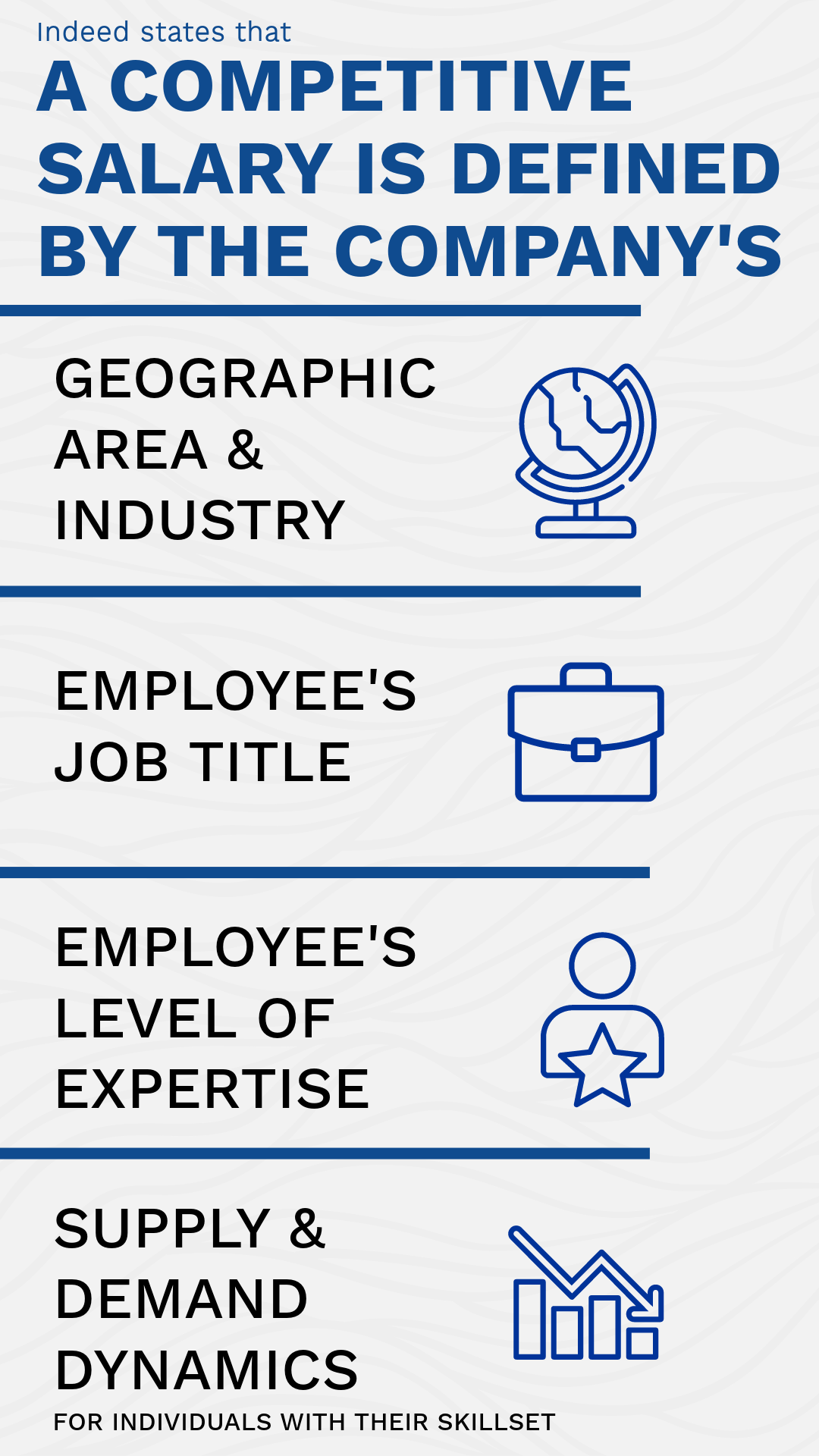
For some examples – a person with a master’s degree and ten years of experience would typically be offered a higher salary than someone with no higher education and only a couple years of experience. Someone working as a marketing associate in Manhattan will need a higher salary than someone in the same position in rural Utah due to the cost-of-living discrepancies between the two areas. Someone may accept a below-market salary if they also receive top-of-the-line benefits, and vice versa. An individual with a rare, highly sought-after skillset might be looking for above-average compensation regardless of their location… and so on.
1.2 Benefits

Nowadays, a retirement plan and good insurance coverage are non-negotiable for most of the labor market. In fact, according to a 2022 Human Interest survey, health insurance and retirement benefits are the number one and number two most in-demand employee benefits. With the high expense of healthcare (and other related categories such as dental care and eye care) in the US and the urgency of securing a comfortable retirement, job seekers will discriminate their search to exclude companies with subpar or no health and retirement benefits on offer.
Companies with health benefits on offer aren’t difficult to find. The 2021 Annual Employer Health Benefits Survey by the Kaiser Family Foundation found that 59% of companies offer health benefits to some of their employees, with an overwhelming 99% of large companies offering them.
Employees in such companies are much more likely to stick around, with 71% of employees stating they are more likely to stay with an employer that offered a retirement plan, and 78% saying they’re more likely to stay with an employer because of their benefits offerings.

Other elements to consider including in your benefits package are mental health care, childcare, fitness programs, and financial wellness options. In an era where workers are looking for greater overall wellness and increased support from their employers, offering additional benefits like these can help set yourself apart from the rest of the pack.
Generally, the higher quality the benefits that employees have access to, the less likely they are to find a competing company with a similar offering. What you can offer in the line of benefits and retirement depends entirely on your budget; however, it’s good practice to organize budgets such that these are a priority. Your benefits package can be the difference maker between an employee staying around or deciding to leave for another. Benchmarking against industry standards and averages is good practice in constructing your employee retirement and benefits program. For example, Investopedia notes that the most common match for retirement is 50 cents on the dollar up to six percent of the employee’s pay, so getting close to or exceeding this match might be a sensible goal to set. SHRM provides a great guide to constructing an employee benefits program.
1.3 Stock/equity
If your company is in the position to offer stock options to employees, this is another great way to keep employees around. Given that employees with stock options benefit directly from the growth and success of the company, they are given an incentive to perform at their best. When the company is gradually growing, they are more likely to stay for the long haul due to the direct financial reward. According to Indeed, companies can also require employees to work for a certain amount of time before receiving stock options, which reduces quick turnover by providing employees with a tangible reward for sticking around. If you want to learn more about how employee stock options work, visit this excellent resource put together by BambooHR.
1.4 Time off, holidays, and flexible work options – mental health
In the aftermath of the pandemic, flexible work (such as remote work and hybrid work) quickly became a high demand offering for employees and job seekers. Employees got accustomed to working from home during the pandemic, and a majority of them ended up preferring it. Today’s workers are strongly opinionated on this matter. Bryan Robinson shed light on a Topia study finding that 94% of employees argue that they should be able to work from anywhere provided that they get their work done, and that 96% place an importance on flexible work options in their job search. From these statistics alone, it should be clear that offering flexible work will make a difference for your employees and increase your chances of retaining them for the long term.
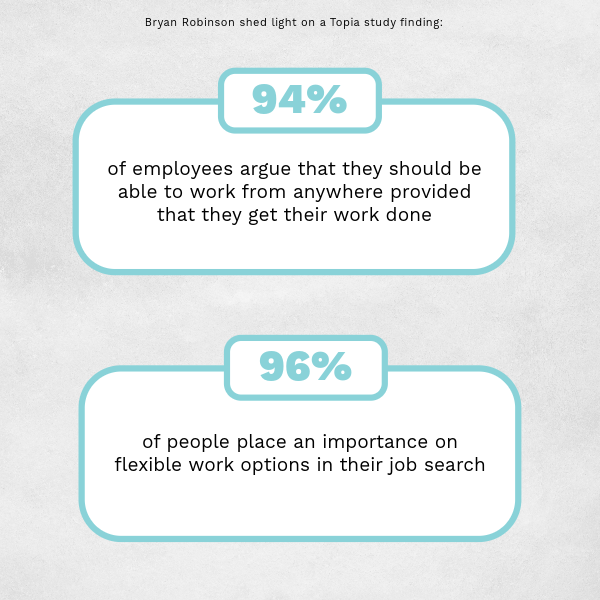
Alongside flexible working options, job seekers and employees still expect to be given an adequate amount of paid time off in addition to paid holidays. They want to be able to take sick days off, take mental health days, and go on vacations without having to worry about their financial or occupational security. PTO can be offered in the form of a set balance or can be unlimited and used at the employee’s discretion. While offering unlimited PTO is currently unconventional, it’s worth noting that 70% of employees are inclined to the idea of unlimited PTO, according to Forbes.
Just offering PTO days, however, isn’t enough. Your company should establish a culture that encourages employees to use all of their PTO days and disconnect from work during those times, especially with burnout and mental health issues on the rise. In order to reap the retention benefits of offering PTO, a company needs to incentivize using it rather than actively or passively deterring their people from using it. Allowed time off is allowed time off – no questions asked. This resource from Forbes provides a variety of things that companies can do to encourage their employees to take their time off.
You can support your employees’ mental health in a variety of ways aside from PTO, even if you’re on a tight budget. Given how widespread mental health issues are among today’s working-age population, all organizations stand to benefit both themselves and their employees by offering some sort of option to address it. As Ann Wyatt writes, some organizations are implementing “mental health days” (either separate from or incorporated in to PTO), offering mental health oriented training and education, and/or re-thinking their EAPs to make mental health services more readily accessible. Others are taking steps as simple as designing parts of their office as “de-stress stations” where people can go to unwind. Whatever step you take towards addressing mental health for your employees is a step in the right direction, and any of these may work as a starting point as you determine the direction you want to take.
Career
2.1 Training and talent development

Learning and development opportunities are highly important to employees and job seekers, especially those newer to the labor market. Oliver Simpson shed light on a 2021 study conducted by Amazon and Gallup, which found that 66% of workers aged 18-24 listed learning opportunities as one of the top three most crucial perks when choosing a new career opportunity. A critical aspect of employee retention, the 2022 LinkedIn Workplace Learning Report found that companies that provide substantial learning and development opportunities to their employees retain them twice as long as companies that do not, and it’s no wonder why.
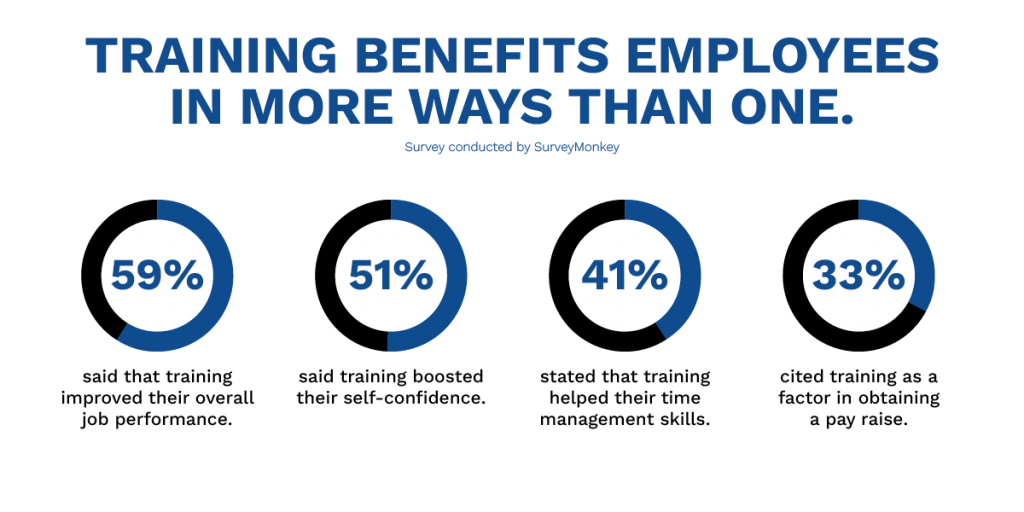
Training benefits employees in more ways than one. A survey conducted by SurveyMonkey concluded that 59% of employees said that training improved their overall job performance, while 51% said it boosted their self-confidence. A further 41% stated that it helped their time management skills, while 33% cited it as a factor in obtaining a pay raise. Beyond that, providing these opportunities provides massive benefits to the organization as a whole. By building a more skilled workforce, companies make themselves more robust and adaptable to industry changes, new opportunities, and setbacks. When done effectively, training is nothing short of a competitive advantage. And when it comes to retention in a cut-throat labor market, it’s a necessity. The 2022 University of Phoenix Annual Career Optimism Index, which received input from 5,000 employees across 500 different companies, revealed that 68% of workers would stay with their employer throughout their career, provided that their employer made efforts to upskill them.
2.2 Formal education
In addition to providing internal skills training opportunities, encouraging and reimbursing formal education for employees is another great way to gain employee confidence and buy-in. Let’s be frank with this one – college is incredibly expensive. Given that undergraduate and graduate degrees provide employees with an array of opportunities and a tangible competitive advantage on the labor market, they are a critical part in building career advancement capability. An article by Paul Bergeron explains that a survey of 22,000 people conducted by EdAssist found that 60% of employees were offered promotions and new opportunities within two years of completing formal educational programs. The link between education and advancement is all too clear to the workforce.
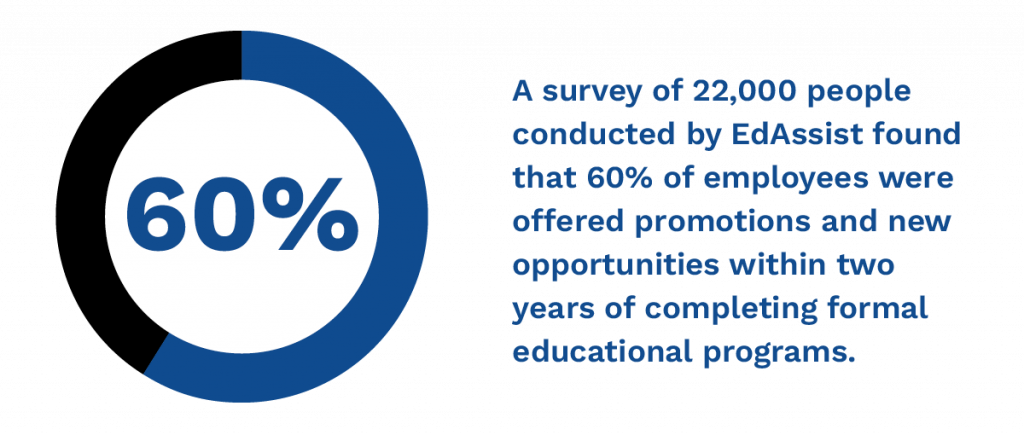
If an employee is presented with the opportunity for an arrangement in which part or all of their educational expenses are being covered by their employer, the likelihood that they are going to pass up that opportunity and leave is very low. The aforementioned survey by EdAssist also found that 84% of recipients agreed that tuition assistance was an important factor in deciding to join their employer, and that a similar 80% of them agreed that they were made more likely to stay at their current company due to their tuition assistance program.
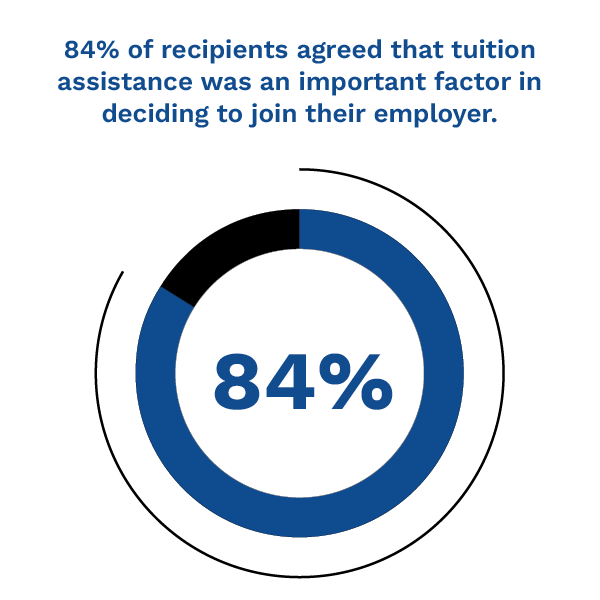
As a result, employees are more engaged, more proficient, and easier to manage, leading to potentially widespread benefits, including an ROI of up to 144 percent like Discover Financial Services’ program (according to University of Massachusetts Global). Employers can pick and choose how they unlock these benefits depending on their capacity and philosophy. Some may choose to offer full tuition reimbursement, others may require employees to meet a certain grade threshold for reimbursement, others may apply reimbursement on a per-class basis depending on its relevancy to the employer. Reasonable terms can be negotiated – the goal is to work within your capacity to find an arrangement that satisfies the needs of the employee and the approach of the employer.

2.3 Career advancement opportunities
Job seekers and employees want to work for companies that provide them with adequate opportunities to move forward in their career, take on more responsibility, and achieve their professional goals. It’s so important that a study conducted by IBM found that employees are 12 times more likely to leave their jobs when they feel that they don’t have an avenue to achieving their goals – and this study reflects reality. This is one of the major elements driving the Great Resignation. Kara Baskin, in an article posted for MIT Sloan, found a 2021 Pew Research survey indicating that 63% of people who quit their jobs that same year did so due to a lack of advancement opportunity.
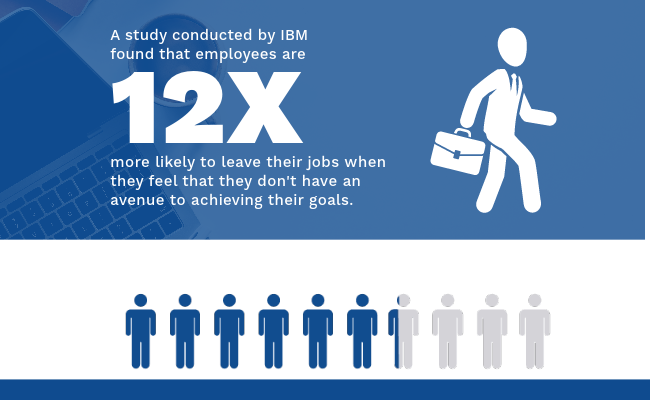
Providing opportunities to train and encouraging education are great fundamental steps to helping employees familiarize themselves with the skills required to fulfill other roles, whether the intended move is vertical or horizontal. Provide them access to the time, resources, and connections they need to learn about things that may or may not directly relate to their role. When employees have a support structure and a level of personal agency in achieving their professional goals within an organization, they are more likely to stick with it.
It’s also good practice to make sure that employees are made aware of their opportunities to advance internally. For example, human resources and managers could go out of their way to pass on information about a new internal posting for a role that they believe an employee would be a good fit for. Additionally, internal postings could include pathways to closing any potential skill gaps alongside the requirements, such as specific training opportunities and where/when to find them. When a motivated and ambitious employee can see opportunities to advance and exactly how to capitalize on them, they will pursue them.
2.4 Leadership
Access to quality leadership and mentorship is one of the most important aspects of employee retention. Many would argue that it is the single most important part of it. Sanjay Jupudi explains that when leaders are qualified, transparent, flexible, transparent, and honest, employees are more likely to stick around, and vice versa. For better or for worse, leaders define actions, attitudes, and decisions for all of the people and teams that report to them. While leaders cannot and should not be expected to be perfect, it’s important to invest in the time and resources necessary to help leaders evolve their skills and be at the top of their game as much as possible. Access to leadership training, mentorship, and skills development courses will equip your leaders with what they need to fulfill the company’s objectives while making sure that the needs of their reports are being satisfied. Leaders have the power to be individual retention drivers at every level of the company.
Environment and Culture
3.1 Work-life balance
In the aftermath of the COVID-19 pandemic, the definition of “work-life balance” has changed completely for many of today’s workers. Not only that, but it’s also become a much higher priority for job seekers and employees alike. An article written by Kate Morgan for the BBC illustrates the scope of importance that workers place on work-life balance. Of the 4,000 respondents to the 2022 FlexJobs Career Pulse Survey, 63% stated that they’d choose work-life balance over better pay (wow!).
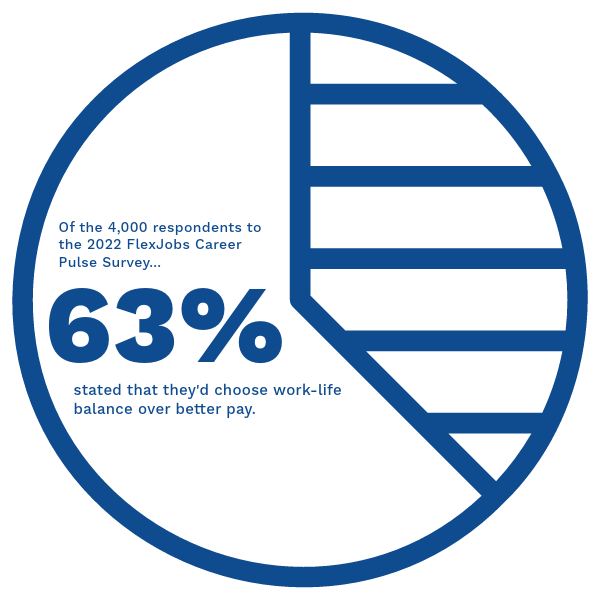
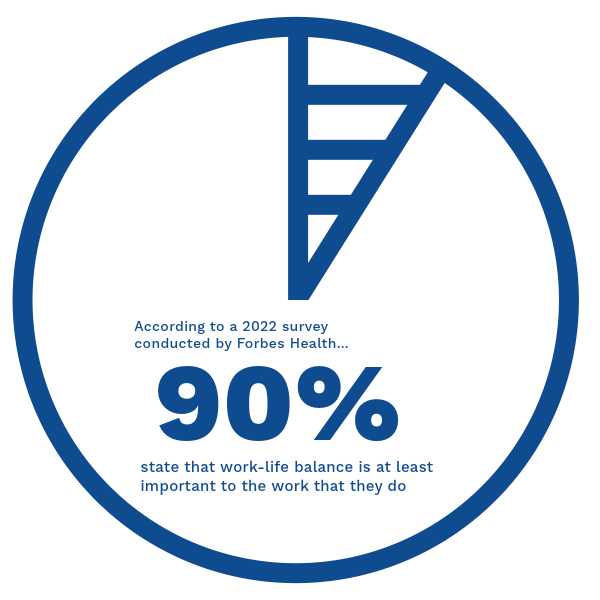
A further 90% of employees state that work-life balance is at least important to the work that they do, according to a 2022 survey conducted by Forbes Health. While it’s evident that today’s labor market puts work-life balance at or near the top of their list of priorities, companies have yet to properly adapt. Over half of millennial and Gen Z workers who left their jobs in 2022 stated a lack of work life balance or lack of flexibility as the reason, according to Microsoft’s Work Trend Index Annual Report.
If workers feel like they don’t have a good work-life balance, you can safely bet that they’re probably entertaining other opportunities. It’s good practice to establish baseline standards that incentivize a proper work-life balance. For example, don’t hold employees accountable for responding to emails and texts when they’re off the clock or on vacation. Don’t actively or passively deter employees from leaving the office or logging off at the exact time they are supposed to. Provide them with options to work flexibly or modify their hours when they have an emergency or something important to address in their personal lives. Take proactive steps to prevent burnout in your employees. Work with them as individuals, and as people! Recognize that they all have their own lives, priorities, and limits. Show that you genuinely value their health and well-being. They will see and appreciate the gesture, and you will reap the benefits of the care you display for your people. According to TonerBuzz, companies that prioritize work-life balance see 25% lower turnover rates and 50% less healthcare expenses.
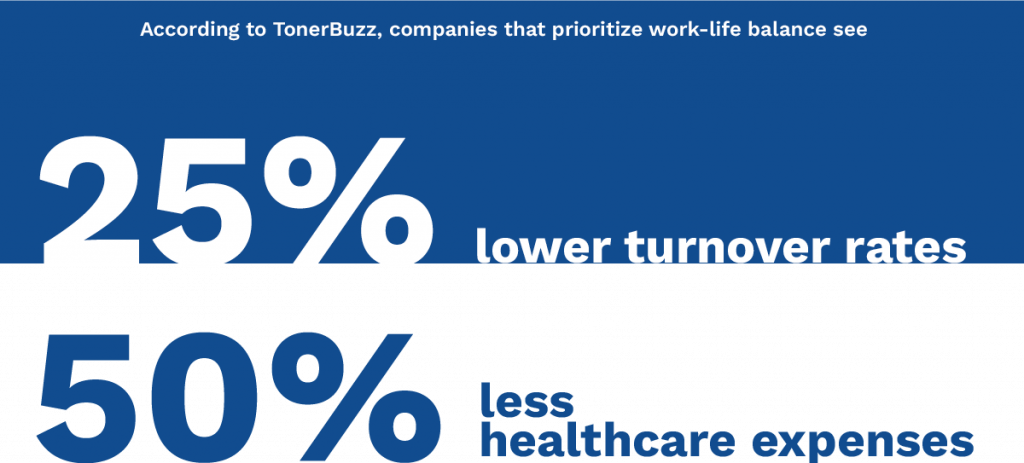
3.2 Mission and core values
Establishing a clearly defined mission and a set of 3-5 core values can set your company apart for job seekers, especially now that today’s workers are looking to dedicate their lives to companies that align with their values. It’s not as easy as saying you have them or putting them on a wall somewhere, though. In order to positively affect retention, a company needs to implement its mission and its core values in every aspect of what they do. Live it – don’t just say it.
Statistics collected by Qualtrics show that company values and missions are not only extremely important to employees now, but also that they are going to increase in importance as newer generations phase into the workplace. Fifty-six percent of US and UK employees stated that they would not even consider working for an employer that didn’t have values aligned with their own, while 46% said that they were considering leaving their current employer for similar reasons. Meanwhile, a remarkable 68% of Gen Z workers say that they would accept a pay cut of 5% or more to work at a company with better values. That’s almost 7 in 10 out of every member of the incoming generation of employees.
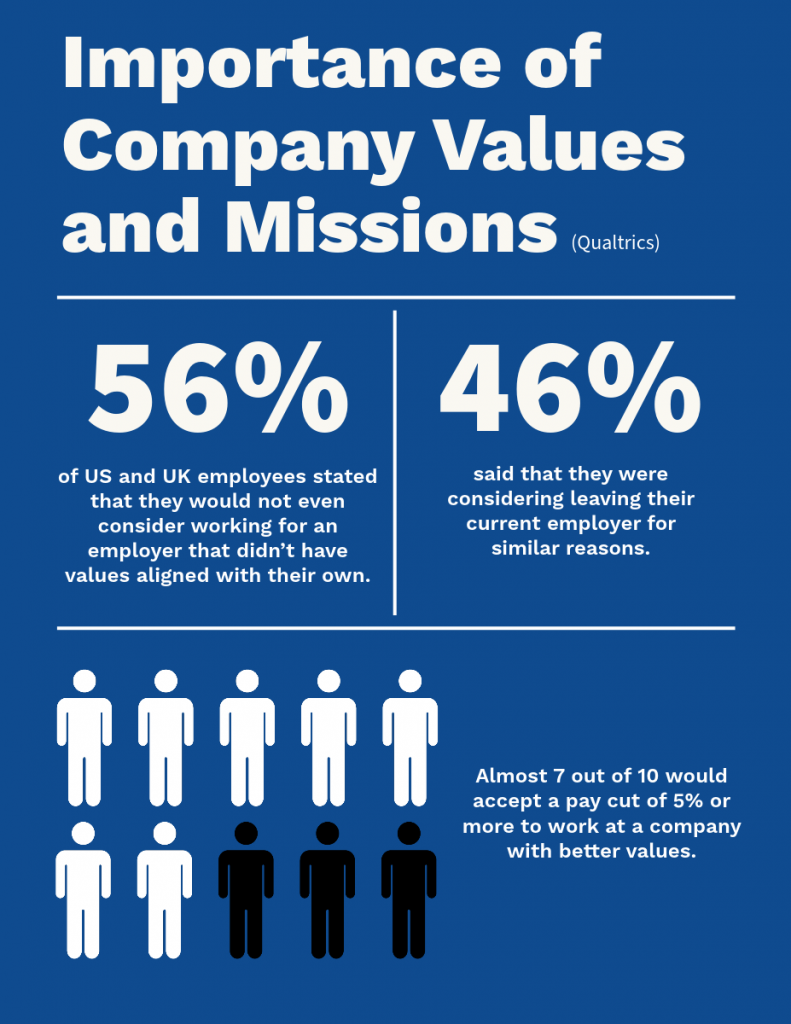
From those statistics alone, it’s easy to deduce why establishing and living a mission and core values are a must. With employees placing such a high level of importance on them, it’s important that they can understand what yours are. As an employer, you’ll have a higher likelihood of catching the attention of high-quality applicants with values that align with yours, making retention over time just that much easier. Meanwhile, job seekers with similar values will be able to pick you out from the rest in their search and identify you as a top option. After onboarding, so long as their work aligns with the company’s mission and values, they will be more engaged and fulfilled in what they are doing, making them more likely to be satisfied with their position.
3.3 Culture
We’d all like to think that we foster a great culture at our workplaces. It’s easy to believe that every employee comes into the office happy and ready to go, that most if not all interactions are fulfilling and respectful, and that people collaborate smoothly and with grace. But the fact of the matter is that’s not always true. Sometimes, workplace culture can turn toxic, and it will last as long as it goes unaddressed. When this happens, the affects on retention are devastating. An article by Claire Hastwell explains it perfectly. An MIT Sloan Management Review survey research project, which analyzed the profiles of over 34 million employees, found that a toxic culture is by far the number one factor in industry-adjusted attrition. Furthermore, an employee is 10 times more likely to leave their company due to a toxic culture than they are due to compensation reasons.
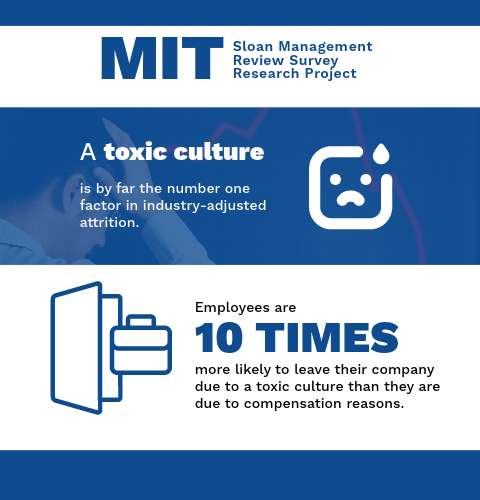
What makes a culture toxic? It can be just one thing, or a multitude of factors all at the same time. Toxic cultures are typically marked by exclusionary behavior, low trust, poor collaboration and communication, discrimination, high stress, and of course, high turnover rates. If you haven’t already, set time aside to gather feedback from your employees and evaluate the state of the culture at your company. We recommend dedicating several days to dig deep, look for the signs of toxicity and commit to a plan of action to remedy them. In the best-case scenario, your evaluation finds little to no toxic elements in your culture, at which point, if you haven’t already, write down the positive aspects that allow people in your company to work so well together.
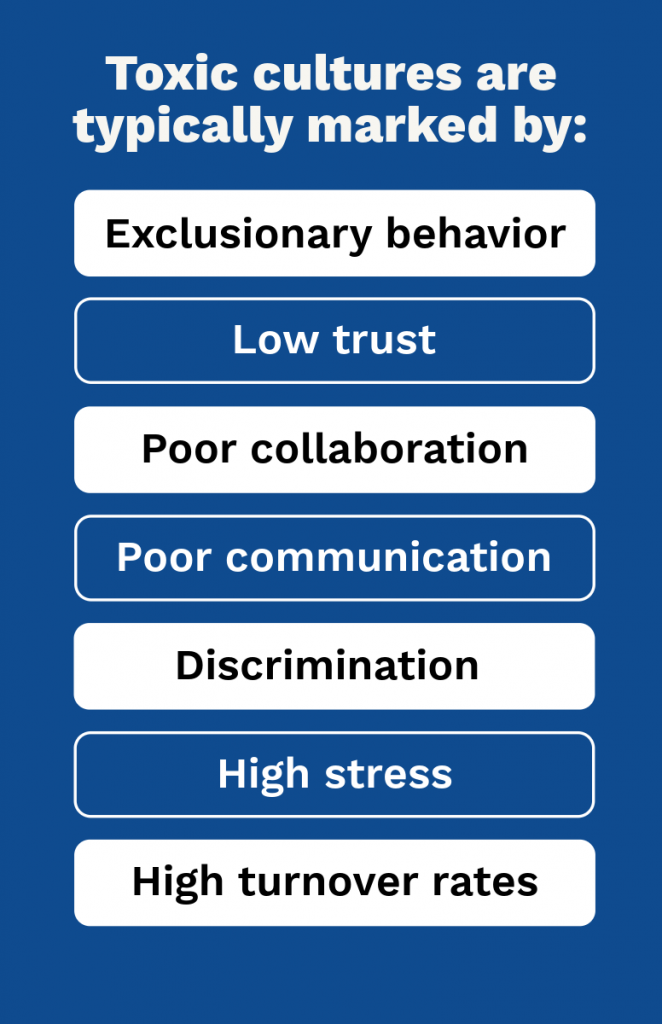
Learning and development opportunities are highly important to employees and job seekers, especially those newer to the labor market. Oliver Simpson shed light on a 2021 study conducted by Amazon and Gallup, which found that 66% of workers aged 18-24 listed learning opportunities as one of the top three most crucial perks when choosing a new career opportunity. A critical aspect of employee retention, the 2022 LinkedIn Workplace Learning Report found that companies that provide substantial learning and development opportunities to their employees retain them twice as long as companies that do not, and it’s no wonder why.
Building a strong company culture isn’t easy, but it is possible. As mentioned before, it starts with conducting an assessment to identify and weed out toxic elements holding it back. From there, you have a relatively blank slate to work with to establish a set of values and norms in the workplace. While what defines a “good” culture will depend on the company, their industry, and the nature of their employees, it should be one that enables employees to collaborate effectively, treat each other respectfully, and get a sense of fulfillment out their work. Although it may seem questionable to focus so much attention on culture when there are tasks to get done and deadlines to fulfill, there is no doubt that the return on your time invested will be immense.
As companies have gradually brought their employees back into the office or on a hybrid schedule, having a healthy (in every aspect of the word) culture has become much more important. There’s a lot of steps that organizations can take to bridge the social gaps that were naturally created over the course of the pandemic. Just one example is the use of an office fitness center! As Ann Wyatt writes, fitness centers have served as centers for personal development, stress management, and connection builders for in-person and hybrid employees. And Wyatt’s company, HealthFitness, found that the corporate fitness centers they manage have been quite successful with a higher degree of engagement before the pandemic. Once you’ve rid your culture of toxicity, consider implementing programs and initiatives that will help build engagement, genuinely benefit the employees, and contribute to creating a culture that will leave a very positive impression on those within it.
Wrapping Up
In today’s labor market, retention might feel like too big an obstacle to tackle. From the largest global corporations to the smallest mom and pop shops, organizations of all sizes and characteristics are struggling to provide incentive to keep their employees in the fold. With societal shocks causing employee needs and wants to change so dramatically within the past few years, it’s no wonder why! In order to de-mystify the secrets behind retention, do the external research and internal data-gathering needed to get a firm grasp on what job seekers and workers are looking for in an employer, and construct or reform your EVP based on what you can do to meet those needs. Hopefully, the concepts and statistics presented in this guide were helpful to you in building or reconsidering your approach to retaining those who make your company possible.
We’d love to hear your thoughts and feedback on this article! Do you have a related topic we didn’t consider? Feel free to email us at info@prophit.com or send us a message on our socials (Facebook, Instagram, or LinkedIn) to strike up a conversation!

